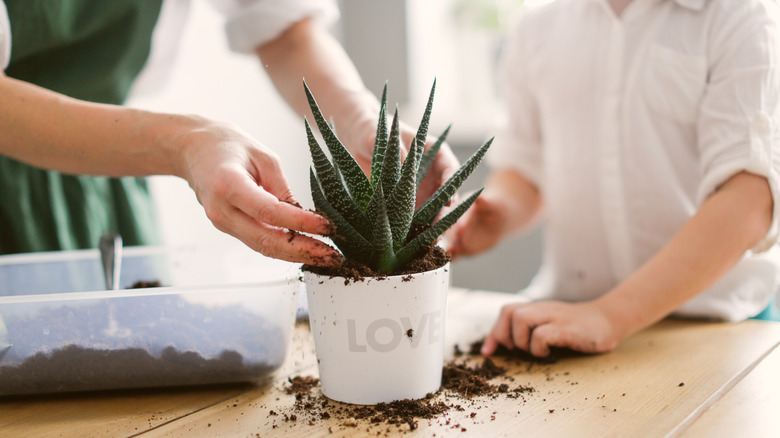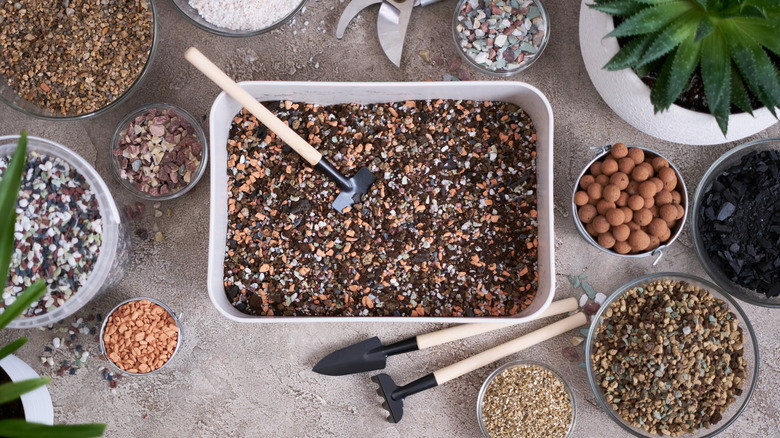Why You Should Think Twice Before Planting Succulents In Regular Potting Soil
A beautiful echeveria with a tight rosette of blue leaves or a proud crown of aloe stems can inspire succulent lovers to grow these plants on a patio or sunny windowsill. But when it comes time to repot, the temptation to plant succulents in unamended, regular potting soil is one that should meet with a firm stamp of denial. When you grow succulents in regular potting soil, those beautiful rosettes can start to sag, and leaves might even turn mushy and fall from the plant.
A rotting succulent plant is a far cry from the beautiful vision that made you buy the plant in the first place. Adapted to dry conditions, succulents thrive when their roots grow in aerated conditions, providing plenty of oxygen. Regular potting soil can easily cause fleshy plants to rot because that type of growing medium is designed for moisture retention rather than fast drainage. Some houseplant potting soils even contain additives to slow moisture loss even more. Rather than planting a jade plant (Crassula ovata) or a pearl plant (Haworthia) in potting soil, you should consider making your own succulent soil for thriving plants.
The best soil options for growing succulents
If when repotting your succulent you only have the choice between regular potting soil and a commercial growing medium designed for cacti and succulents, choose the second option. Commercial mixes for fleshy plants contain ingredients such as extra perlite, sand, or pumice, which is perfect for succulents. Compared to regular potting soil, cacti and succulent soil mixes provide faster water drainage. However, even some commercial soils designed for fleshy plants don't drain quickly enough for succulents.
Keep in mind that there are different types of succulents, with some growing in humid rain forests, such as Christmas cacti (Schlumbergera spp.), and others adapted to very dry conditions, like living stones (Lithops spp.). Species adapted to very arid conditions will reap the benefits of adding mineral grit to your succulent soil to increase drainage.
On the other hand, depending on the succulent you're growing, you may be able to get away with simply taking regular potting soil and adding an equal amount of sand to the bagged mix. Whatever type of mix you decide on when planting succulents, check your soil to see if it has enough drainage by making sure the dirt crumbles in hand instead of clumping. And speaking of drainage, an additional step you should take to protect the health of your favorite succulent is to make sure its pot has plenty of drainage holes.

